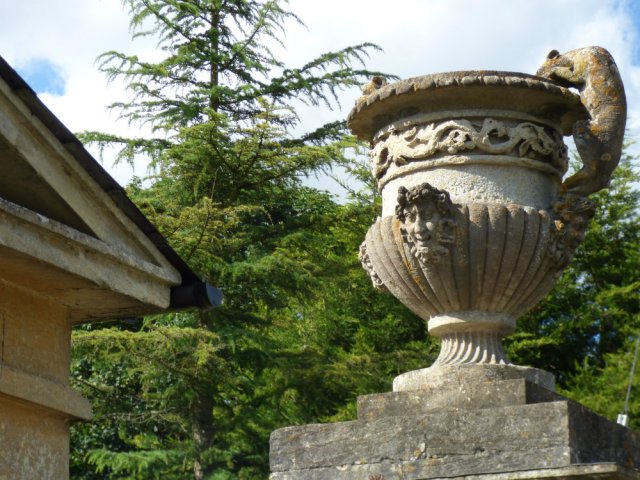
After leaving Somerton church. we felt obliged to stop for a drink and absorb what we had seen. Some of the symbolism will be being mulled over for some time. but on a hot summer’s day, there is no better place than the garden of an old coaching inn for processing those initial thoughts. I just happened to know of one…the Jersey at Stoney Middleton which sits on the edge of the Middleton estate of the Jersey family. Just inside the gates, there is a church and a castle.

All Saints, Middleton Stoney
The castle is now no more than a mound and earthworks. If you didn’t know, you would think it no more than a knoll in the field, but we have been playing with these earthen castles for quite some time. I had seen it on a previous visit and looked it up, finding it to be listed as the remains of a Norman motte and bailey castle, first recorded in 1215.
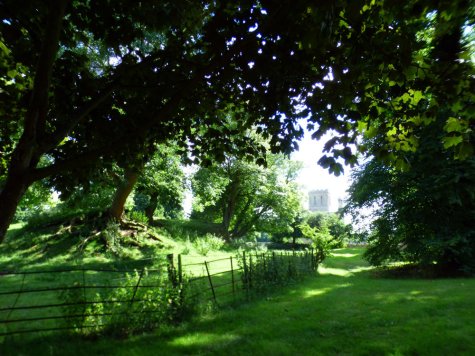
The remains of the motte and bailey castle
The history of the area goes back much further, though. A thousand years ago, the lands belonged to Turi when Edward the Confessor was king. Before that, the Romans and Anglo-Saxons were in the area, and before the Saxons, Aves Ditch, a series of earthworks were built that are still used as the parish boundary.
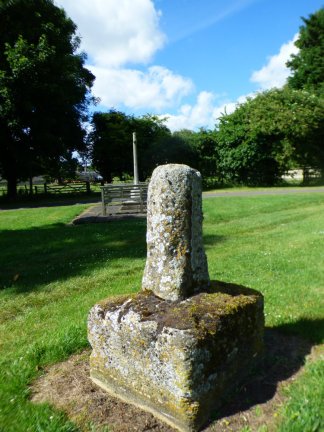
Outside the churchyard there are two crosses. One, a modern memorial to servicemen and women, the other the remains of a medieval cross.
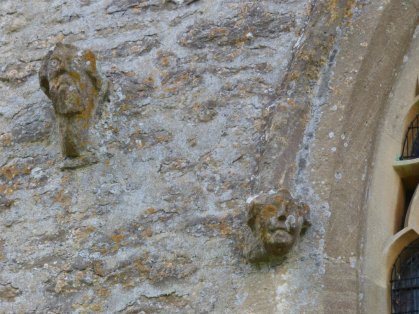
Medieval faces
As we were so close, it would have been rude not to call. Especially given the associations with people of a period I had read a great deal about when I was younger. As a youngster I loved the world painted by Georgette Heyer in her books set in the Regency period. Technically they are romances, but it was the mix of fact and fiction and her portraits of historical figures that fascinated me. Her retelling of the battle of Waterloo and the Peninsula campaign remain, for me, the most readable works on that era and sent me off on a quest for biographies, campaign notes and field diaries. I credit those ‘romances’ in which the romance was only a vehicle for her love of the era with a widening of my love for history.
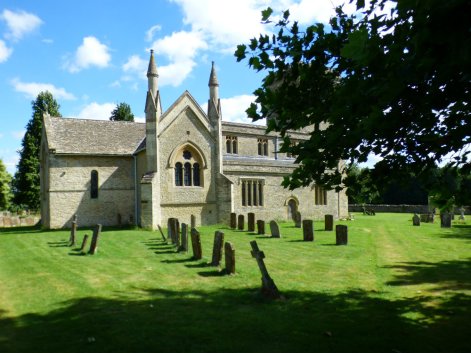
The two spires flank the Jersey mausoleum
Fans of the Heyer or of the Regency period in general will know of ‘Sally’ Jersey… Lady Sarah Fane who became Sarah Child Villiers, Countess of Jersey. Sally Jersey, the talkative arbiter of London society, was known as ‘Silence’. She famously refused to admit the Duke of Wellington to the select Almack’s Assembly Rooms when he arrived late and was one of those whose approval or lack of it could make or break the social position in Regency society. She was immortalised by Benjamin Disreali in Endymion as Zenobia, and as Lady Augusta in Caroline Lamb’s Glenavon, a novel that set the gossips on fire at the time of its publication. What I didn’t know is that Sally Jersey is buried in the little church at Middleton Stoney.
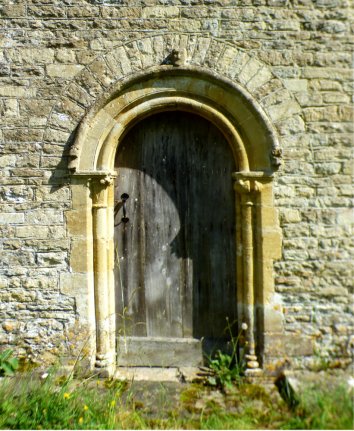
12thC north doorway
The church dates back to the middle of the twelfth century, with later additions and major restoration in the middle of the nineteenth century. Sadly, the doors of the church were locked. We tried the little north door, beneath the watchful gaze of its guardian, who has watched here for almost nine hundred years.
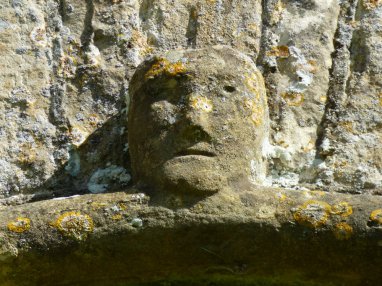
We tried the big wooden doors to the porch on the south side, but that too was locked, preventing us from seeing the and we wandered off disappointed, to look at the remnants of ancient architecture. I have no idea what made us try the vestry door… but surprisingly, it was open so in we went through the oldest part of the church and into the chancel.
Norman south doorway. Image: Motacilla CCASA3 via Wikipedia
It is a simple church. As we find at many of these old places, at first glance there appears to be little to see, but closer inspection begins to reveal treasures. Some of them are tangible in the form of art others are less so and capture moments of history and the lives and deaths of the people.
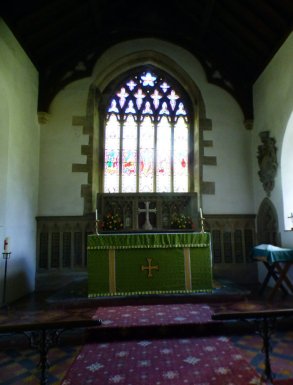
Norman chancel
A carved face looks down from the arches towards the font. Others are smaller and less easy to spot. Even so, there is always the sense of being watched…or watched over in these old places. perhaps it is just the moral compass that guides visitors to act with respect. perhaps it is the feather light touch of centuries of prayer.
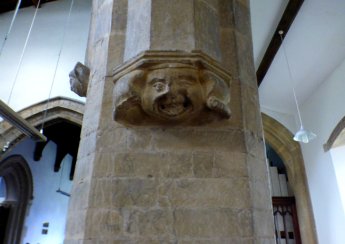
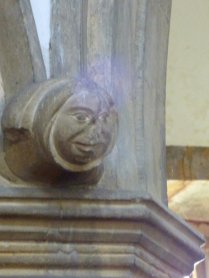
The font came from the chapel of Edward the Confessor at nearby Islip. The legend says it is the very font in which the saintly king was baptised, but the evidence doesn’t add up.
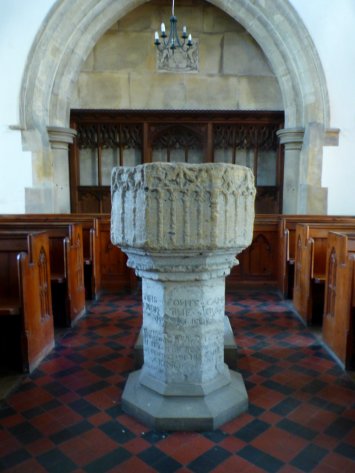
The inscription was not cut until the seventeenth century and the style of the font itself dates back only seven hundred years or so, far too late for the Confessor, though it may have been recarved from an older one.
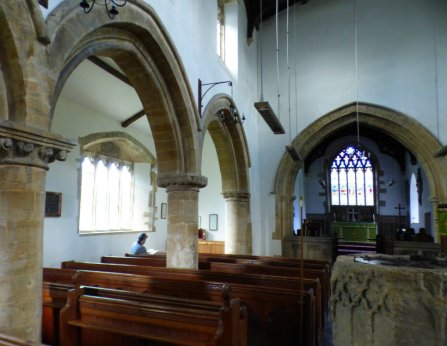
Norman arcade and 13thC chancel arch
The font has seen a few things on its travels from Islip. At one point in its history it was used as a feeding bowl for turkeys. Later, it became a laundry basin, then a garden ornament, before being finally restored to its place within a church.
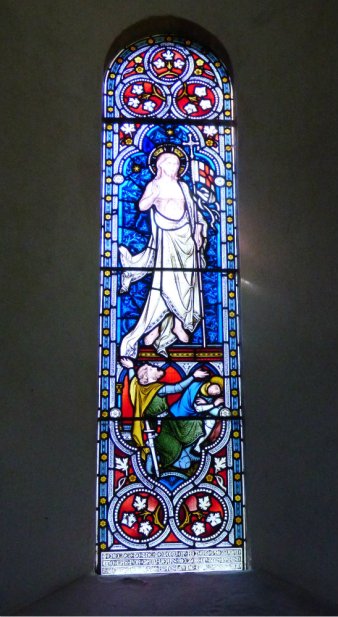
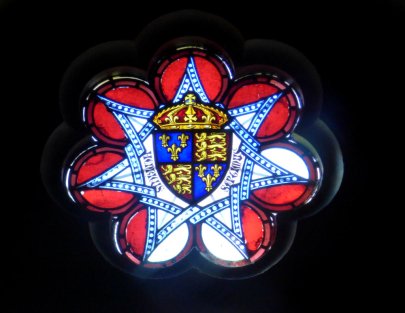
The Jersey mausoleum could easily be overlooked by the casual visitor. It is hidden behind a locked, wrought iron screen and heavy curtains. Only an upward glance at the right moment would reveal the gilded heraldic ceiling that gives away its position.

A little judicious curtain-tweaking allowed us to take a respectful glance into the hidden chapel. Beneath the window is a memorial to Sally Jersey and her husband, bearing portraits of the couple. It was placed there ‘in affectionate remembrance of his Mother’ by her sole surviving son.
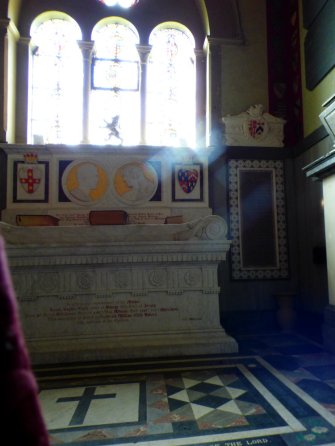
The most touching memorial, though, was less ornate. In every church there is a Roll of Honor, where the names of those who served their country in the Great War are remembered. Here the Book of Remembrance is kept in a wooden case in a chapel on the north aisle. Each page is beautifully hand-inscribed in fairest copperplate and gives the name and story of every man of the village who died in that war. For such a small village, there are a surprising number of pages and, along with the names from later conflicts remembered on the plaques, show brothers, fathers and sons…generations of the same families…lost to violent death.
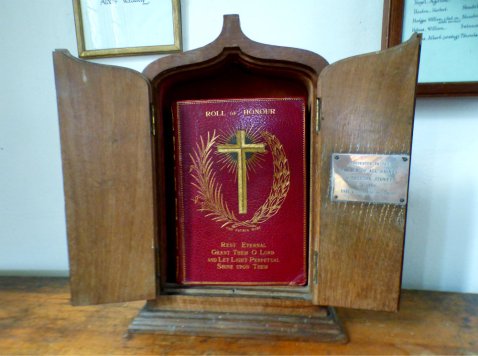
I will photograph the tombs of the great and the famous. I may photograph the gravestones and memorials in churchyards, but these names are different. They need to be read in person with due respect. The tiny church that had looked so unpromising had yielded unexpected treasures after all.
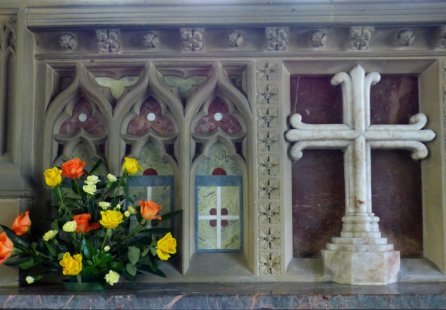
Marble reredos









































Reblogged this on Blog Pad 2017.
LikeLike
Thanks, Henrietta.
LikeLike
You are welcome!
LikeLiked by 1 person
Magnificent infrastructure and wonderful nature in the background.
LikeLike
Thank you 🙂
LikeLiked by 1 person
Reblogged this on When Angels Fly.
LikeLike
Thank you, Mary.
LikeLiked by 1 person
Welcome!
LikeLiked by 1 person
The faces are so interesting to me and I think I’ve seen them in other posts of yours. Guardians or watchers? Beneficent or casting a warning eye? A beautiful ancient place.
LikeLike
I have folders full of them… ancient and more modern. I seldom post them because they are visually not all that interesting on their own, but sometimes you get a really good one…
There are a good many thoeries about what purpose they serve, and they probably all have merit, depending on where and what the heads represent. Some are definitely harking back to pre-Christian beliefs and some are thought to be representations of Celtic deities…possibly even a relic of the cult of the head. Symbolically though, I doubt if there is a one-size-fits-all answer.
LikeLiked by 1 person
Its interesting to find a motte and bailey that was built so late, considering they were pretty much out of fashion by the 13th century, though I guess the castle could have been built much earlier than 1215 and only recorded then.
LikeLike
That appears to be the first recorded mention, though many of these mounds are older than the records. Are you aware of the research being done by the Round Mounds Project from Reading University? Some of their results are astonishing. https://roundmoundsproject.wordpress.com/
LikeLike
Wow, thank you Sue, you have no idea how potentially helpful this may be to me. I’m actually doing a dissertation on a rather unusual historical mound myself.
LikeLike
Oh? Now I’d be very interested to hear about that when it is allowable.
LikeLiked by 1 person
When I finally get over there, I’m going to create a ‘Sue Vincent Guide to the British Isles’, from these blog posts and see everything. 😀
LikeLike
You’ll need a while… and a local guide 😉
LikeLiked by 1 person
Yep! 😀
LikeLike
🙂
LikeLike